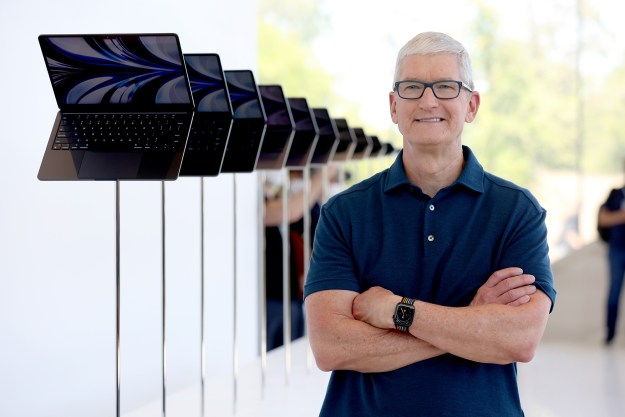Despite the fact that Silicon Valley has burned billions of dollars on the metaverse, current incarnations of the idea remain largely unappealing to the general public – and it’s easy to see why. Between Meta’s lackluster vision for VR meetings and Decentraland’s uncomfortably empty digital cities, the metaverse doesn’t really have much to offer right now.
But just because Big Tech’s metaverse vision is falling flat doesn’t mean that it can’t be improved. So in the spirit of offering constructive criticism, we asked DT staffers what they want to see in the metaverse. What features, elements, or ideals are missing from the
A genuinely interconnected space
What makes the metaverse such a compelling promise on paper is the idea of an interconnected digital space. In a best-case scenario, it functions like a 3D version of the internet where you can seamlessly browse between different spaces and experiences. However, that idea has yet to tangibly appear in any current corporate vision of the tech. Meta’s
For the metaverse to truly work, companies need to be willing to work together to unite their experiences under one roof – and that’s a tall order in a capitalist society. If Meta is out to pioneer the space, is it going to be willing to work hand-in-hand with Epic Games, another company that’s long had its sights set on building its own version of the
– Giovanni Colantonio, Gaming Editor
More refined hardware
No, you don’t need to wear a headset to visit the metaverse, but there’s definitely some sci-fi appeal to doing so, and there’s no doubt a really effectively designed computer-generated environment is incredibly immersive when viewed through a virtual reality headset. Except, unfortunately, a headset that is comfortable to wear and use for hours on end doesn’t really exist yet.
If I’m going to use the metaverse and live out those sci-fi dreams, I want the full experience, and for that I’m willing to wear a headset — just not one that hurts the bridge of my nose, slides down my face, is so heavy it feels like a cat is draped over my skull, can’t be worn anywhere except in the house, costs a fortune, looks ridiculous, and plays havoc with my glasses. Cool software needs universally appealing hardware, which is why apps on our phones and tablets are so successful. The
– Andy Boxall, Senior Writer
A purpose a corporation didn’t invent
I keep hearing the birth of the metaverse compared to the birth of the internet. That analogy is broken on too many levels to list, but I’ll focus on the most important: The early internet did things. People flocked online to murder strangers across the world in Doom, trade pirated software, and connect with people as weird as themselves. It sold itself; We just needed companies to build the platforms for it.
In contrast, the Meta-imagined metaverse remains a platform in search of purpose. If you give VR hardware to enough gifted deviants with coding chops, they’ll figure it out just like they did 30 years ago. But organic growth is slow, dirty, and not guaranteed to make shareholders money. As long as Meta insists on constructing it from the top down for the purpose of extracting your money, the
– Nick Mokey, Managing Editor
A dazzling, sci-fi function of some sort
If Big Tech wants us to believe the metaverse is the future of personal and professional communication, then giving us something that feels like an incremental step toward the future we’re familiar with – the one in sci-fi movies, television, literature, or games – would go a long way toward winning us over. We might be a long way off from announcing, “Call my mother,” and being able to interact with her hologram while preparing dinner, but some discernible step toward that kind of mainstream, accessible sort of future tech would make the idea of a wide-reaching, interconnected
Give us something that lets us see ourselves in the future worlds we’ve seen in sci-fi for years now, and it will be easier to embrace the implied potential of the Metaverse.
– Rick Marshall, Contributing Editor
Non-monetized spaces and interactions
One of the things that really turns me off about our existing versions of the metaverse is that they’re all hyper-capitalist hellscapes. Everything seems to be attached to your crypto wallet, powered by NFTs, and geared toward transactions that are logged and monitored on some sort of blockchain. It’s as if the whole thing was dreamt up by creatively bankrupt ‘entrepreneurs’ who are more interested in extracting profits than building a vibrant digital universe that frees human creativity from the bounds of the physical world.
I don’t know about you, but I’m not interested in a metaverse that’s built on consumerism, transactional relationships, and neo-feudalist platforms where everything I do ultimately serves some megacorporation’s bottom line. I don’t want to drop into a virtual world that simply mirrors or amplifies the worst parts of the real world. I want something that’s different – or, if I may be so bold – something better. If Big Tech wants to make a meaningful
– Drew Prindle, Senior Editor
Editors' Recommendations
- Here’s why the Vision Pro succeeded where the Apple Car failed
- A new iMac Pro could still launch. Here’s what I want from it
- Here’s how Apple could drastically cut the Vision Pro’s price
- No, 1Password wasn’t hacked – here’s what really happened
- Even Microsoft thinks ChatGPT needs to be regulated — here’s why




